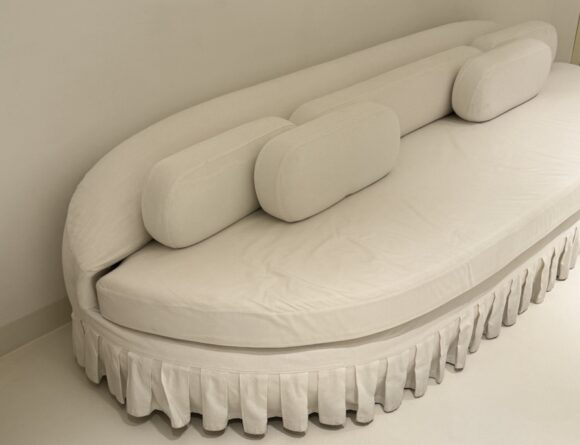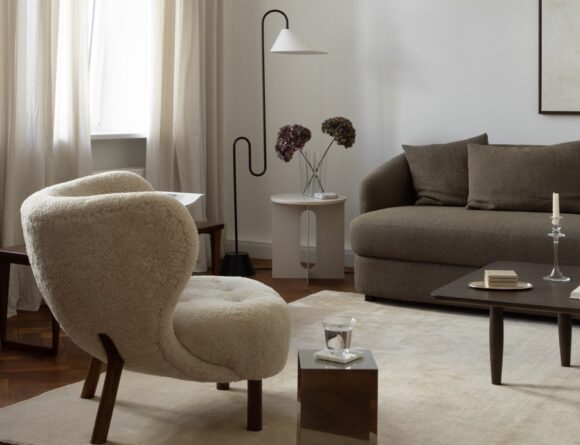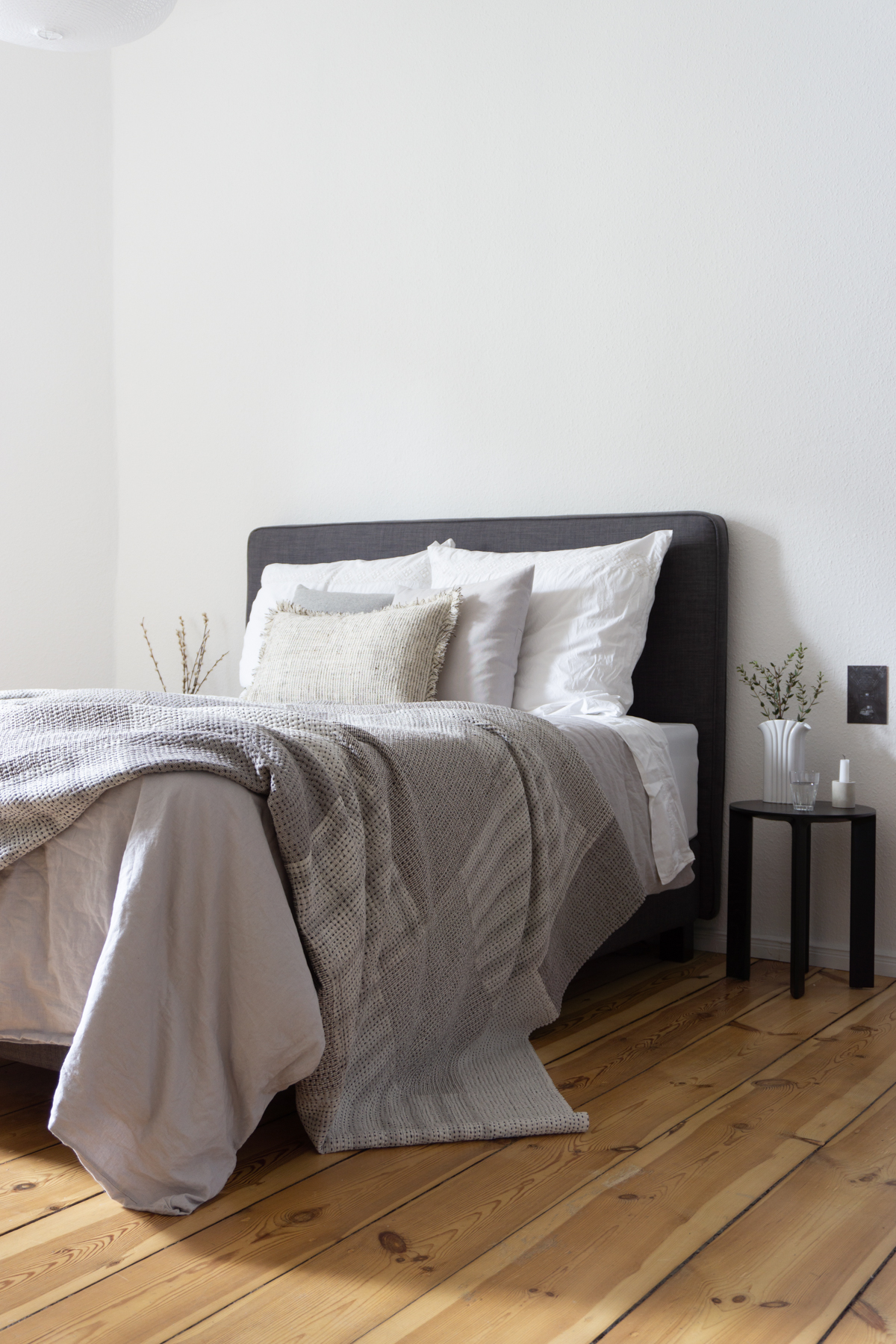
I really appreciate it when a brand takes social and sustainable production just as serious as design, especially in a time when industrial textile manufacturing is at an all time high. Stitch by Stitch is one of those brands, and I’m very excited to tell you all more about their lovely products and ethically mindful mode of operation.
Every beautiful piece produced by Stitch by Stitch is not only made with the closest attention to craft, but also ethical and environmental responsibility. The brand is based out of the UK and working with textile artisans in both India and Nepal using age-old techniques that have been passed down over the decades. Almost all of their products are produced by hand using organic materials free of pesticides and chemical dyes. Although the Stitch by Stitch collection is designed in the UK, the brands aesthetic is guided by the traditional work of the skilled artisans they commission. Best of all, the brand works closely with their weavers, quilters, and farmers to ensure fair wage delivery.
I’m absolutely in love with the way these Stitch by Stitch pieces pair in our home. There’s something about the natural and raw textures that brings a beautiful warmth to our bedroom, and the neutral colorway looks stunning with some of our more contemporary accent pieces. I still can’t get over the quality and intricacy of this Chindi Quilt, and I’m sure the Desi Cushion will look just as eye-catching on our sofa or HAY Hee lounge chair in the living room.
Featured Items – Desi Natural Stripe Handwoven Wool Cushion / Raw Chindi Organic Kala Cotton Kantha Quilt
Shop their full collection of beautiful, ethical, and handmade products here.
This post features gifted items and was written in collaboration with Stitch by Stitch.
An Interview with Stitch by Stitch brand director, Karen Sear Shimali.
Q – What sparked the beginning of Stitch by Stitch?
“Graham Hollick had the idea for the brand back in around 2010 when he worked on a project with the Self Employed Women’s Association (or SEWA) in India. The organization promotes all home-based female workers in India to ensure they are supported in their self-employment, have access to bank accounts and finance, and supports them in their endeavor to find profitable work. Graham worked on a fashion project with embroiderers based in the remote Kutch region in north west India, which is an area famed for its long tradition of highly skilled textile artisans, including embroiderers, hand weavers, textile dyers, spinners and block printers. Graham was so inspired by the embroiderers, who live in humble conditions, yet produce such intricate and artistic work, and so impressed with the quality of their handiwork, that he went on to design a line of embroidered quilts, bed throws and cushions, working with the same group of highly skilled embroiderers. This collection, called Peacock Sportif, was Stitch by Stitch’s first collection.”
Scroll for more responses…
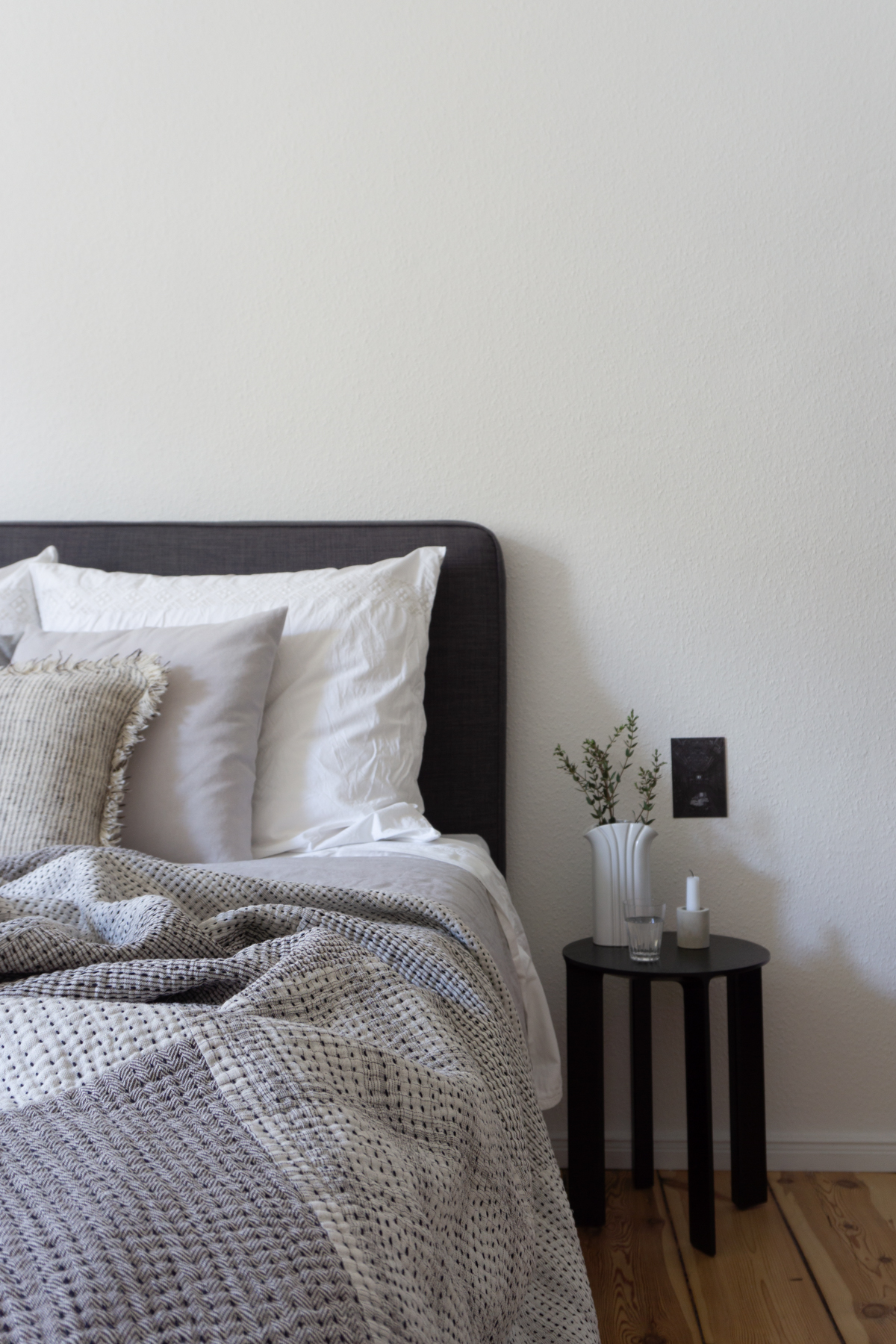
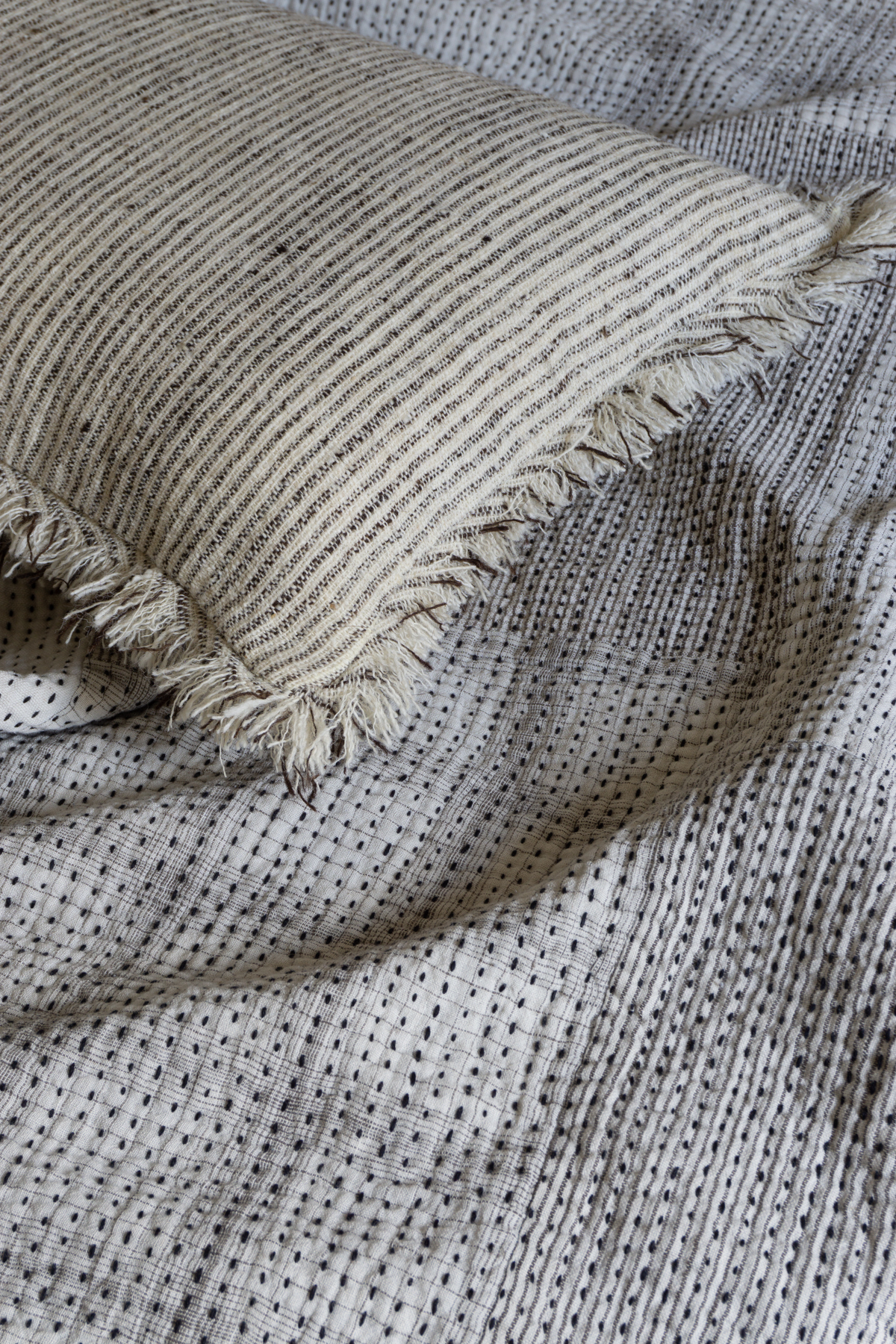
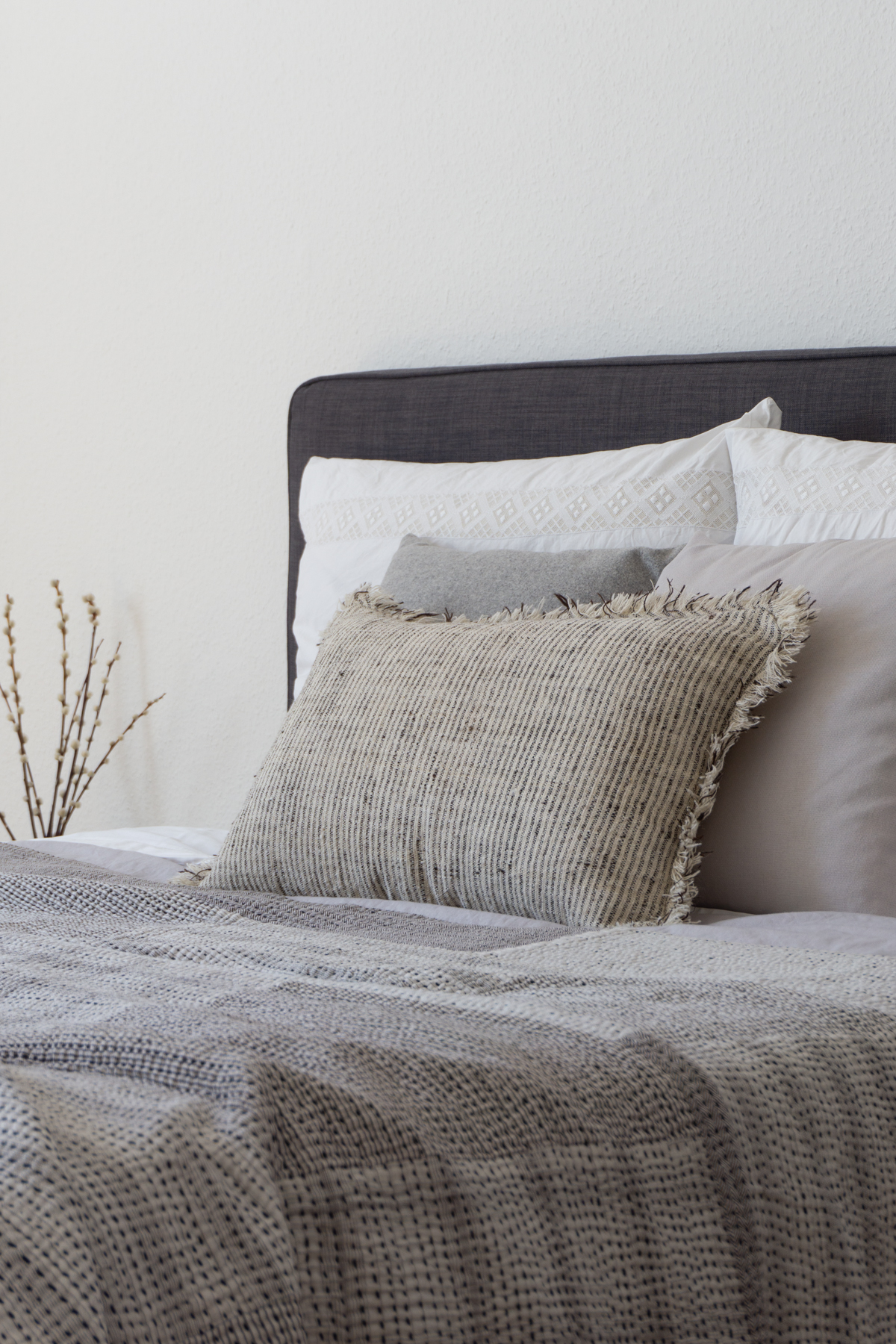
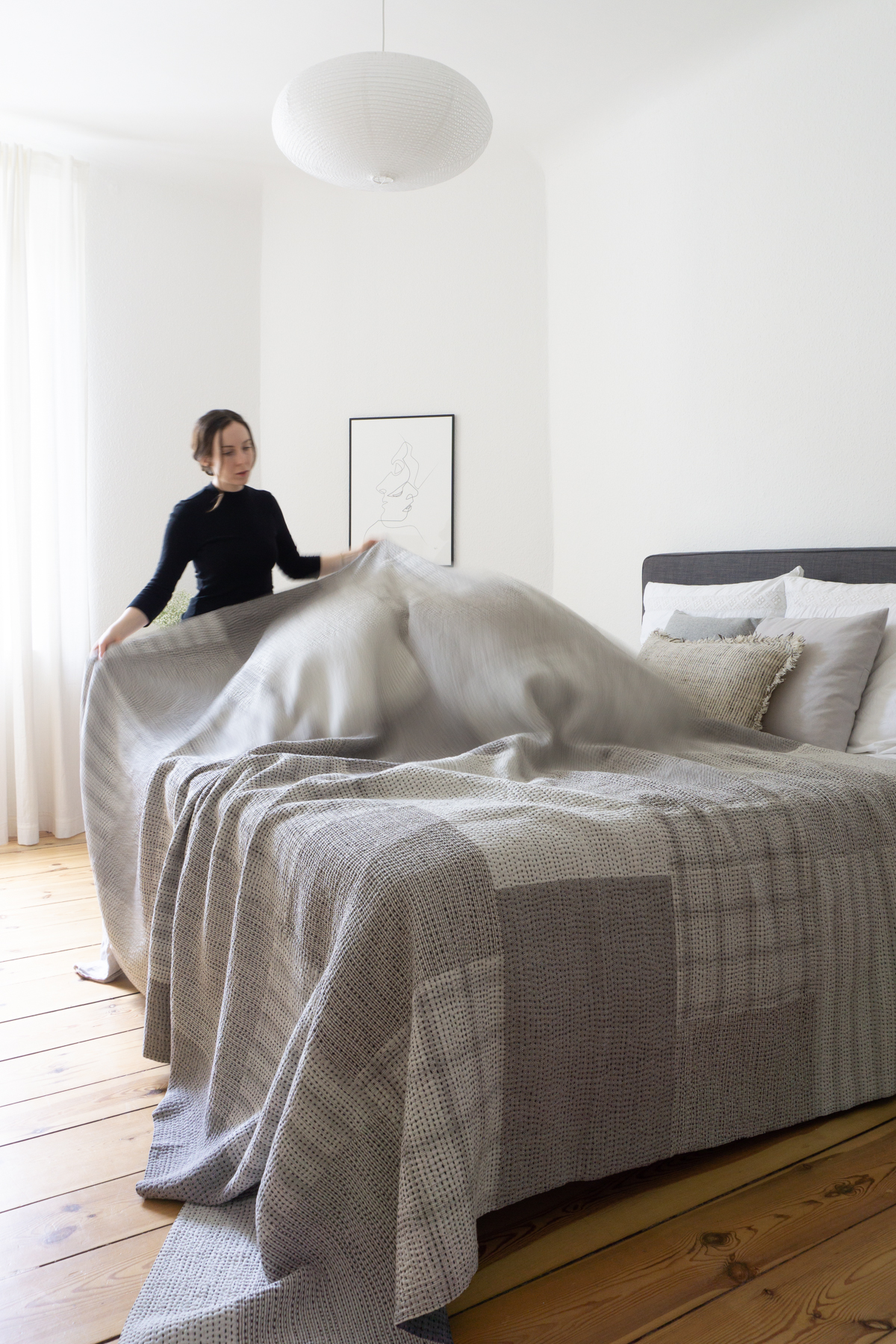
Q – Where did your journey start and what lead you to begin working with artisan weavers in India and Nepal? Where these relationship existing and thus the Stitch by Stitch brand was inspired, or did you have the concept for the products and then set out on a journey to find the right artisan makers to hire?
“After several subsequent visits to the region, and after partnering with an old friend who runs a textile production studio in Ahmedabad, Graham made contact with other textile artisans in Kutch, such as a group of hand weavers who work with purely rain-fed, indigenous kala cotton which is farmed, hand spun and naturally dyed, all within the local area. This group is supported by an NGO which is dedicated to the resurgence of this sustainable cotton crop, which can be grown in the arid environment without the need for additional irrigation, and without pesticides of fertilizers, thus making it organic, and an antidote to genetically modified cotton which is destroying the local environment, and contributing to extreme financial pressure on local farmers. The NGO supports the whole supply chain from the farmer right through to the weavers. We started buying cotton fabrics from them, and sent them to a master quilt maker we had met in Ahmedabad, to produce some modern patchwork quilts (our Chindi and Raw Chindi quilts). Although his usual patchwork designs are more traditional, he welcomed our simpler, more free patchwork designs!
We also met a master weaver in Kutch working with local wool – or ‘desi’ wool. He is famous throughout the area, and has won many awards for his weaving, but has also set up a wide co-operative of local weavers, all who weave from home in his village. His encouragement to stay in the village has meant that many men who would usually have left their families for low-paid work in the cities, now remain at home, and make a reasonable living from their weaving. We buy all our Desi wool directly from this co-operative.
Similarly, we made contact with an NGO in Nepal called SABAH, who works with weavers in the remote Himalayan villages, weaving thick wool radhi rugs from their own mountain-dwelling sheep. We loved the quality of their rugs, but the designs were often very patterned and sometimes dyed bright colors. We asked them to weave pared down designs and to leave the wool un-dyed. We’re only interested in working with small groups of artisans who produce exceptional work, and fair trade principles are at the heart of what we do.”
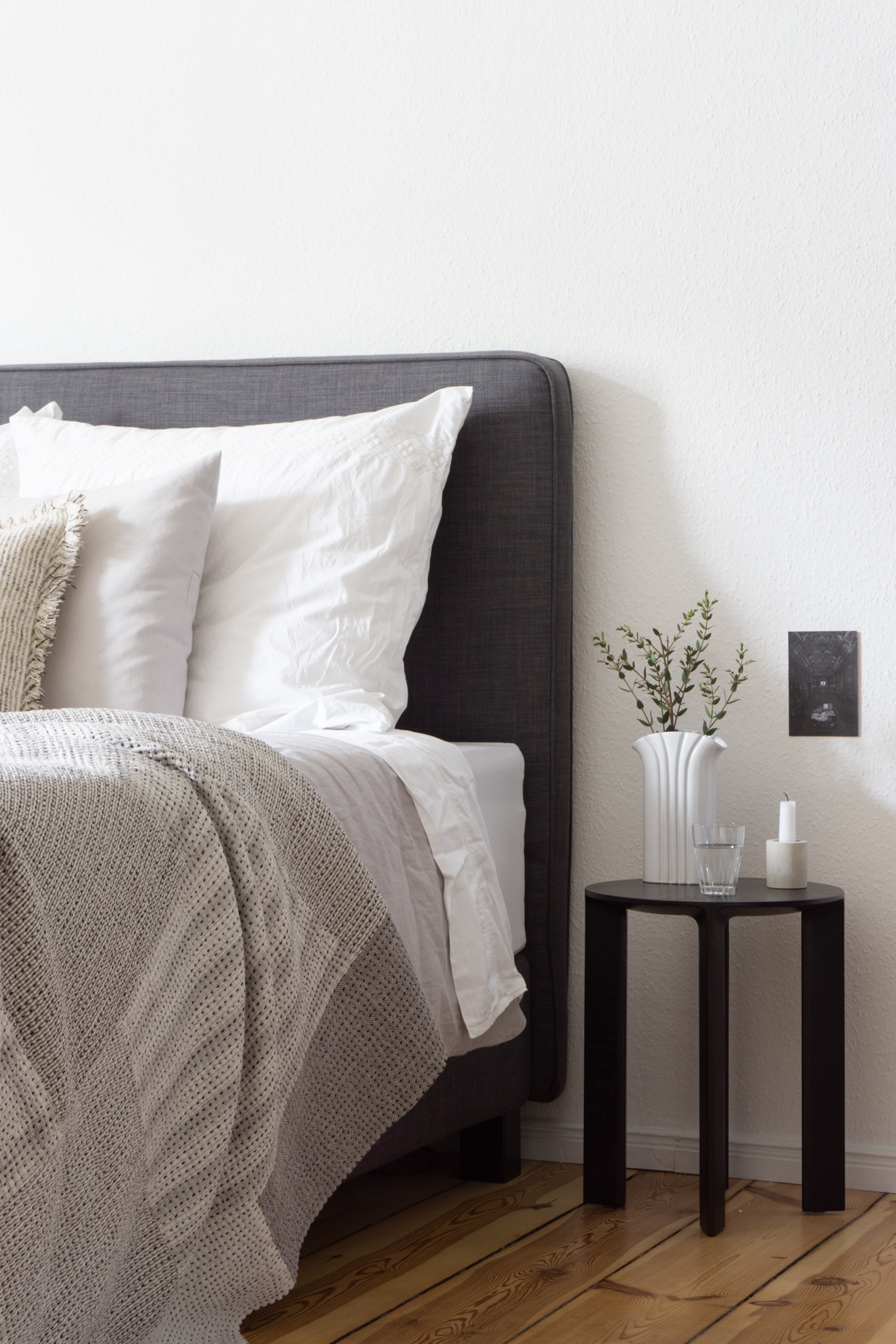
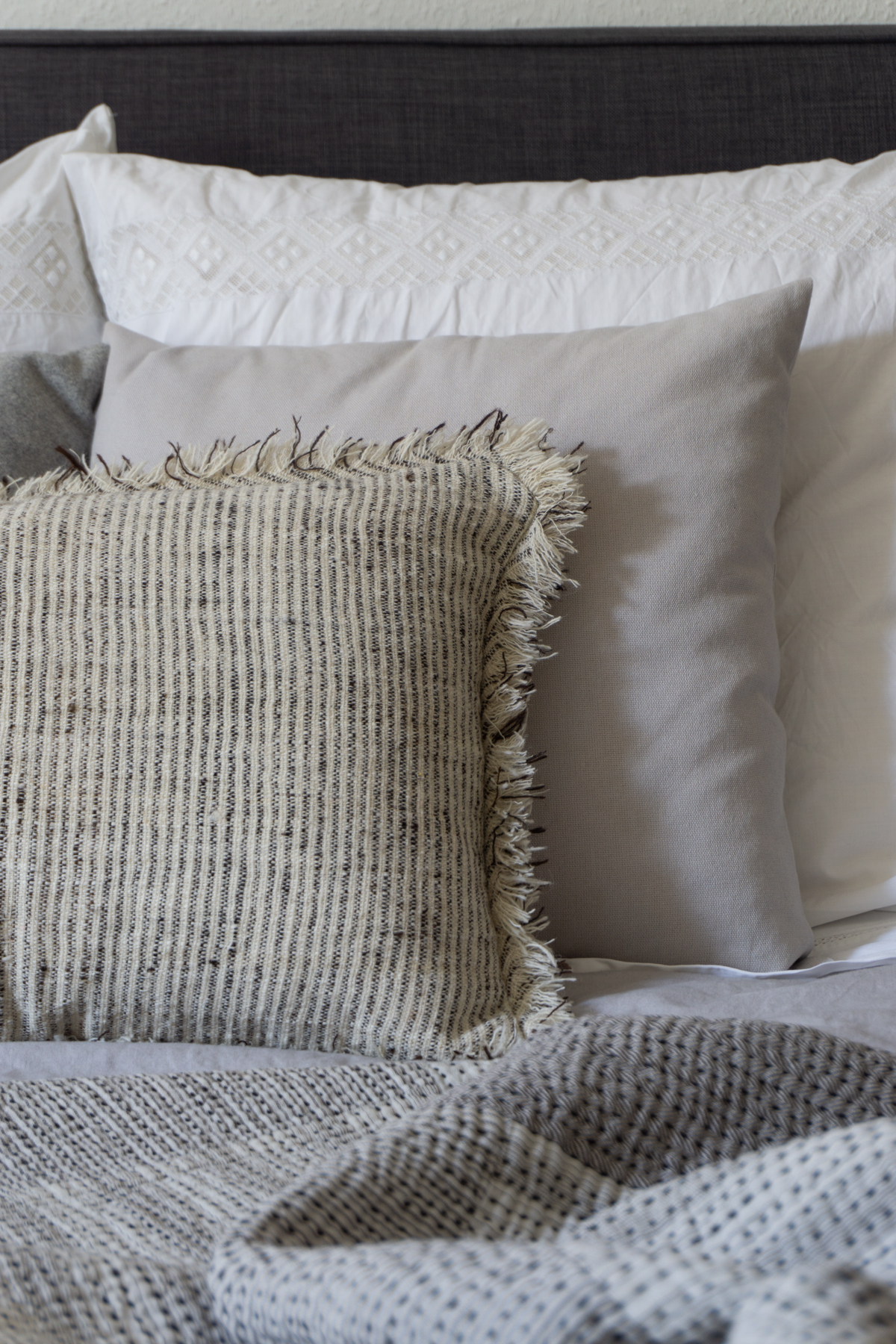
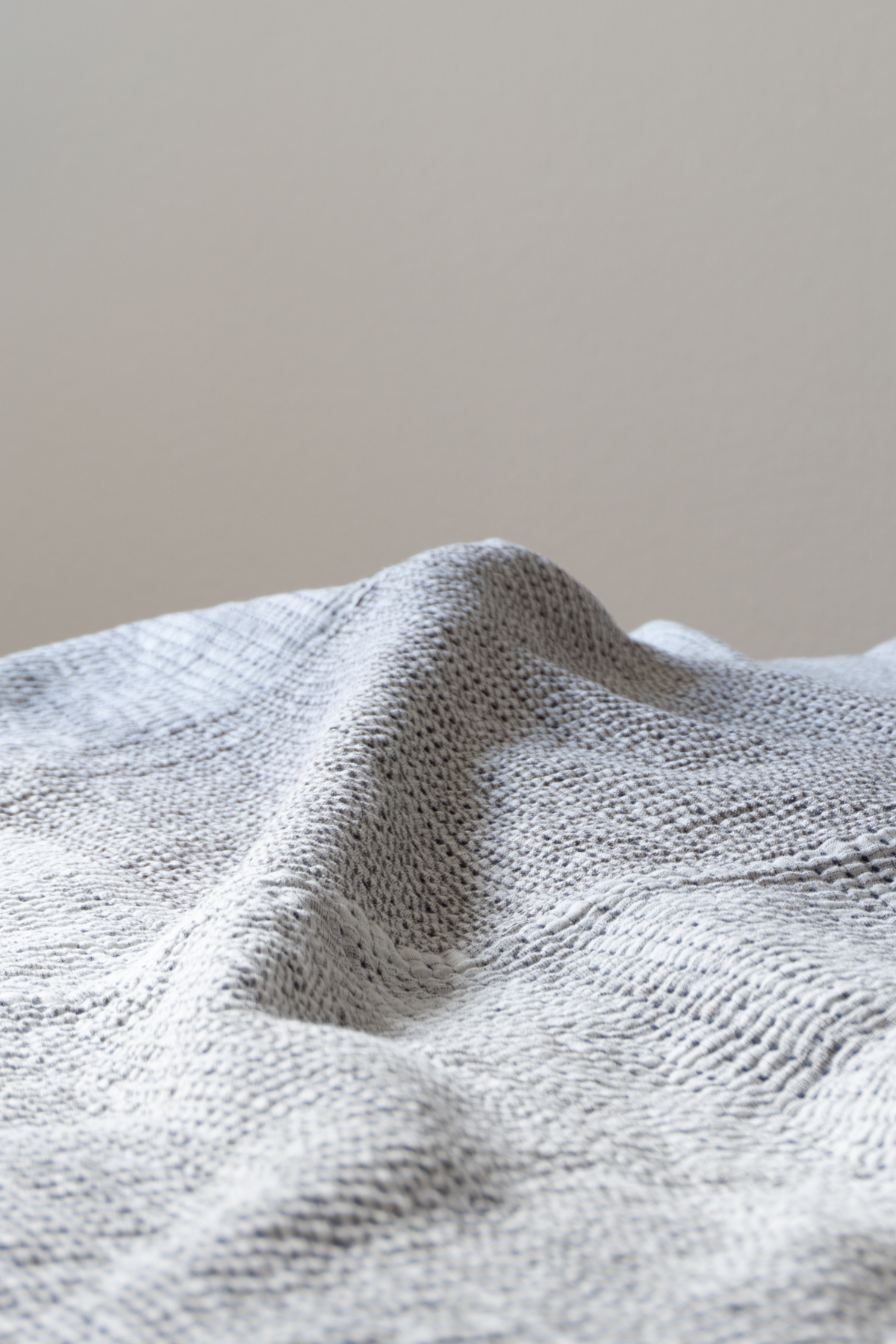
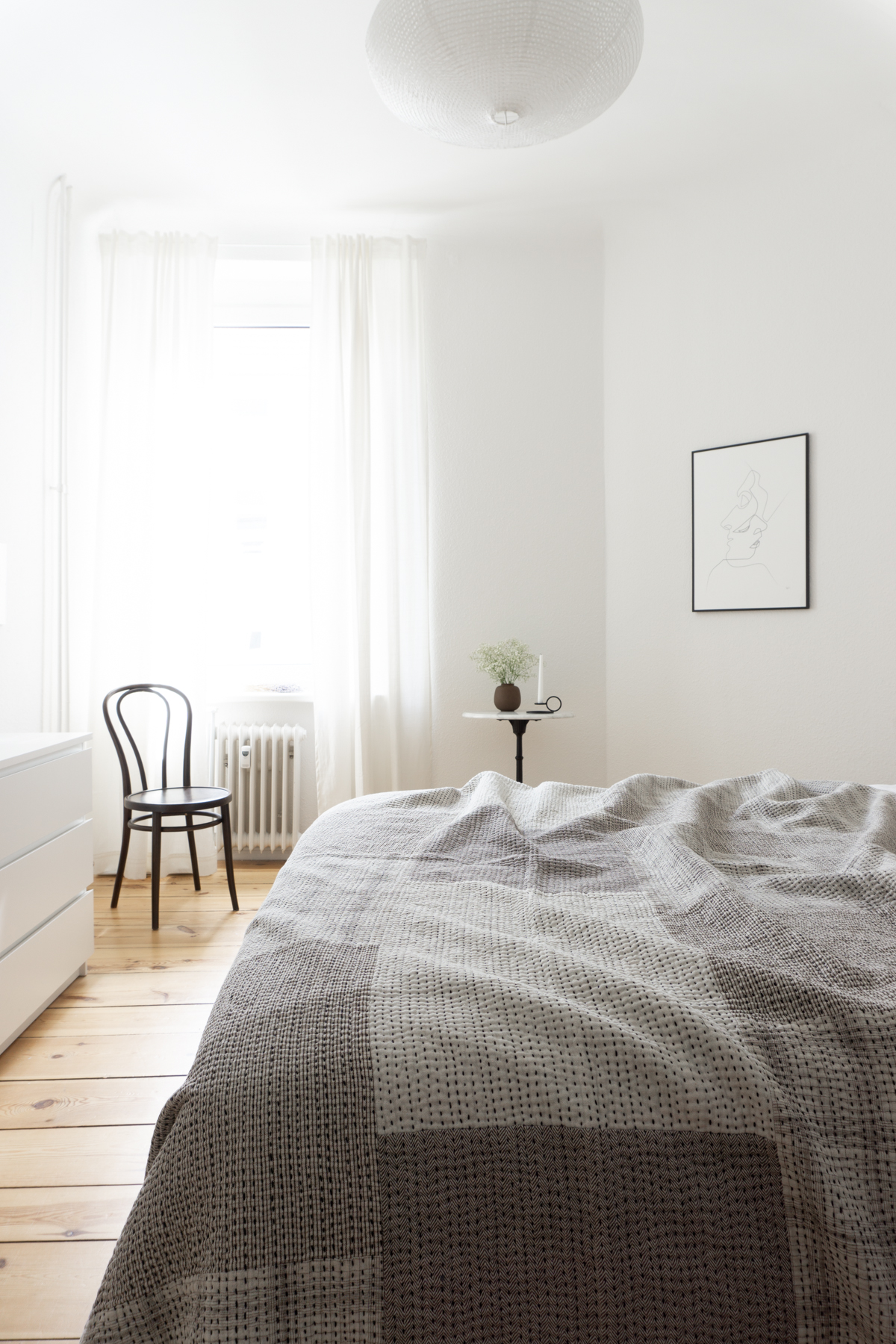
Q – The pieces which you offer have such a wonderfully natural and personalized aesthetic. How much of this aesthetic is guided by the capabilities of your talented weavers and quilters, and how much of it is driven by the imaginative designs coming from your studio in the UK?
“The existing textile skills of the area are really the starting point for our collections, and we try to showcase and pay homage to these talents in our pieces. However, of course being British, we are also highly influenced by a northern European design aesthetic, so we reinterpret the traditional skills in a modern way.”
Q – The name Stitch by Stitch is very representative in the style of the pieces you produce, especially the quilts. Can you tell me more about this unique quilting technique? Is it entirely done by hand by your makers in Gujarat?
“Yes, kantha stitching is entirely done by hand. It is an ancient technique developed simply to stitch several layers of fabric together, often old saris, to form a warm covering. It is very common in India and Bangladesh but it is difficult to find quilt makers working at the quality of our craftspeople. Our quilt makers use very small, neat, close stitches in rows of about 1-2cm apart. They also use very long threads so that there are no knots on the surface of the quilts. It takes one month to stitch one quilt.”
Q – The Stitch by Stich ethos is obviously deeply rooted in sustainability and ethical production. What steps do you take to maintain this admirable commitment to the environment and the skilled individuals who produce your products?
“It is a bit of a labor of love! Doing things well is not the easy route, but we have never been interested in mass-production or cutting corners with price or quality. By working with our NGOs in both India and Nepal, and also by having our partner in Ahmedabad, we can be sure that the textiles are being produced ethically and sustainably.”
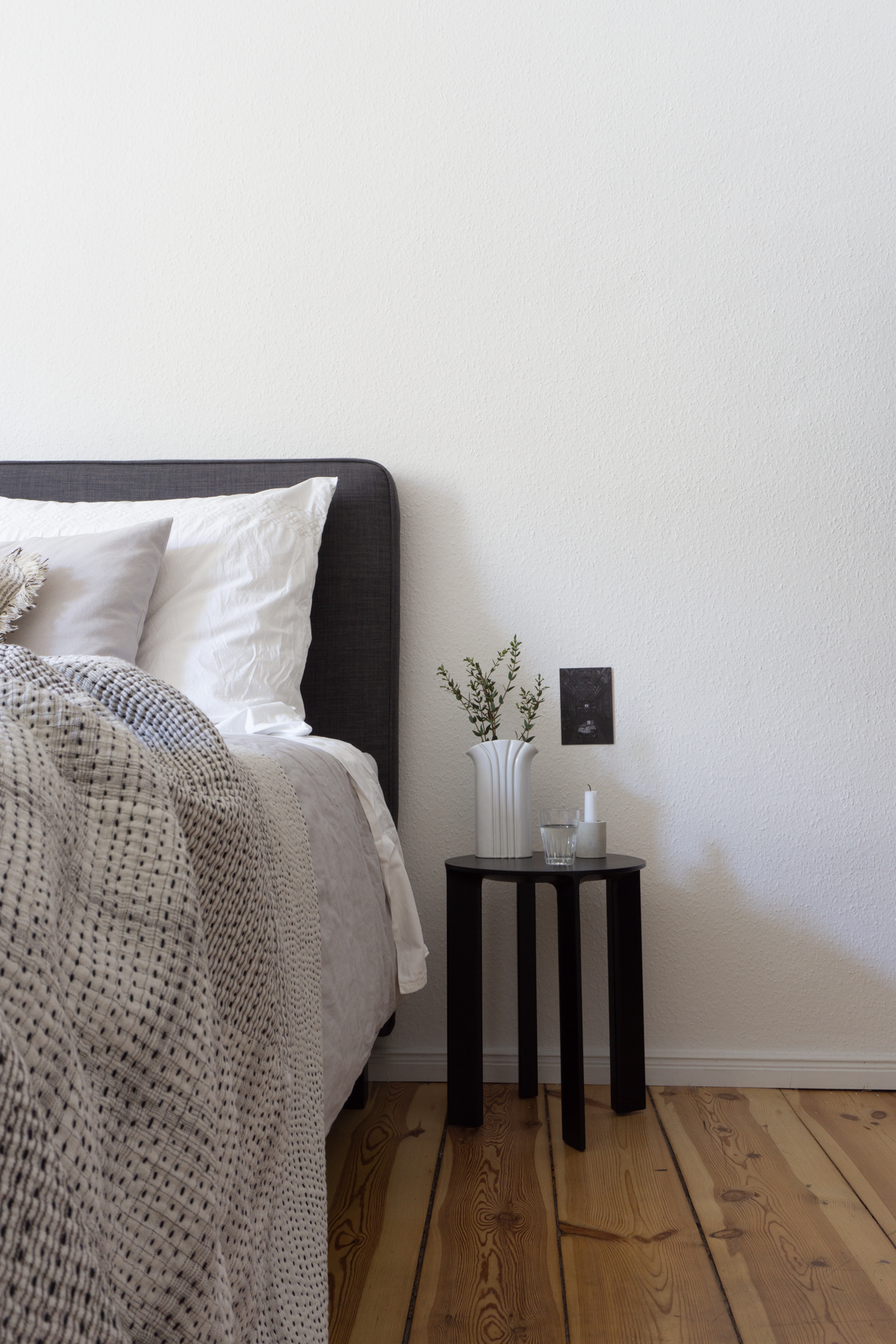
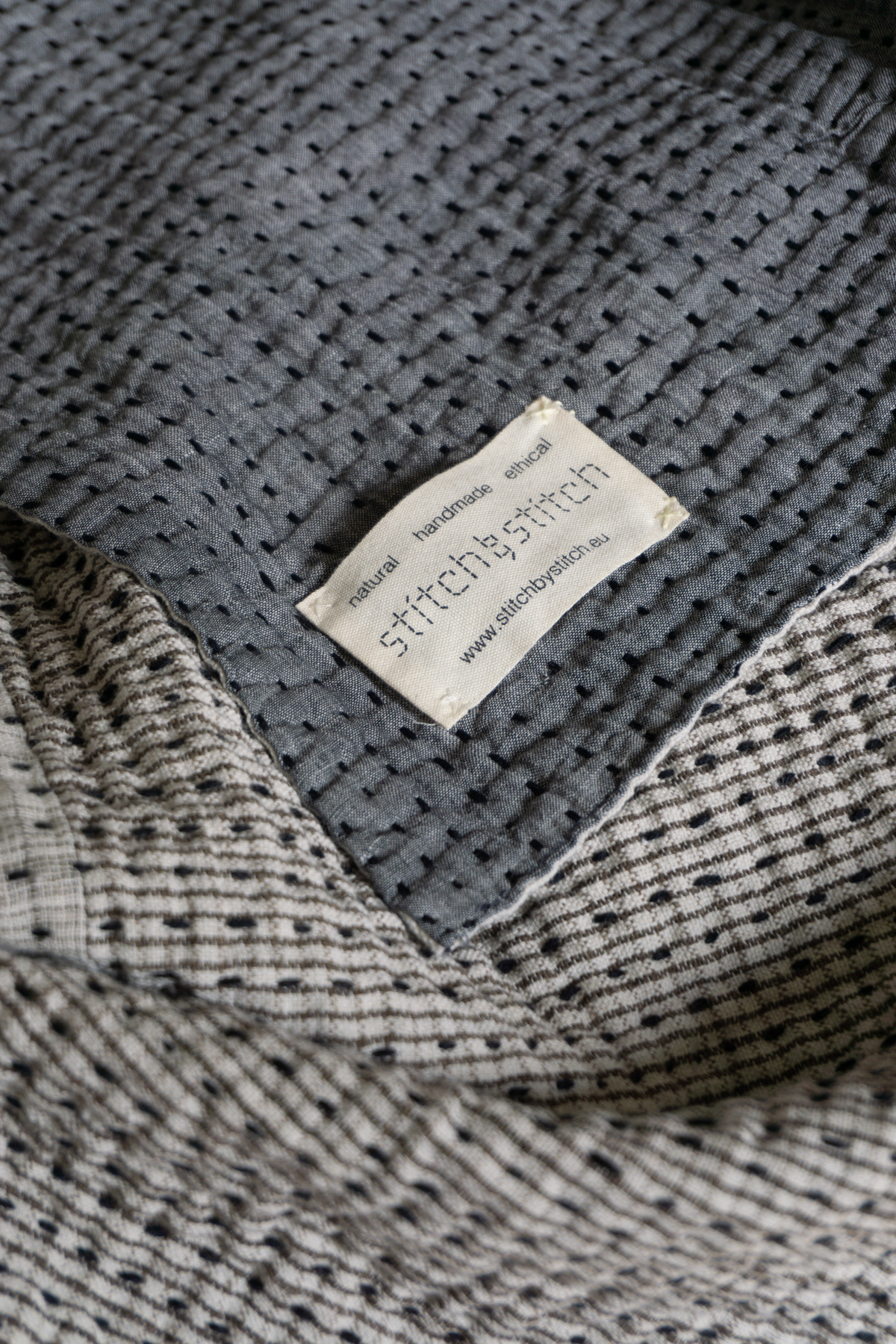
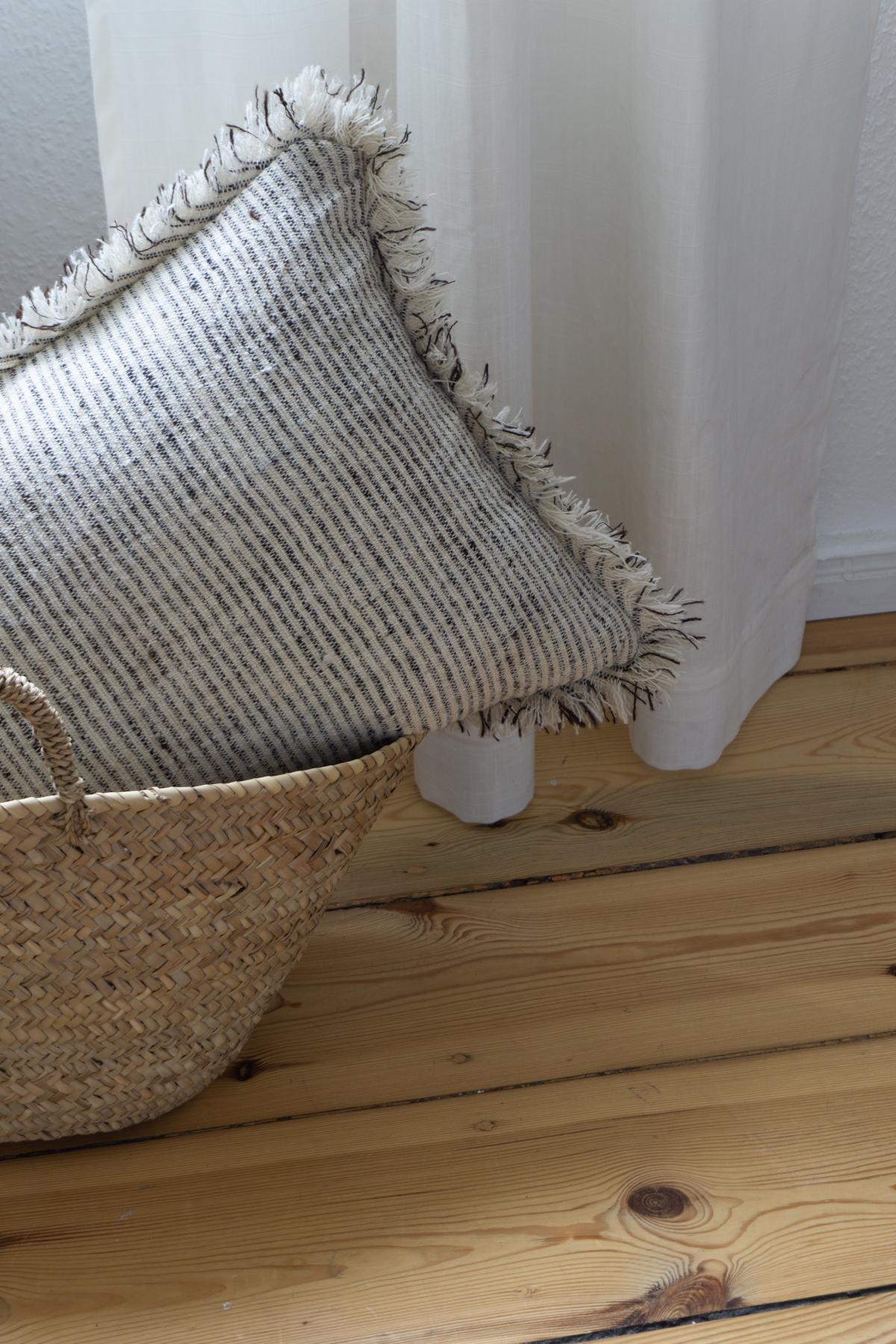
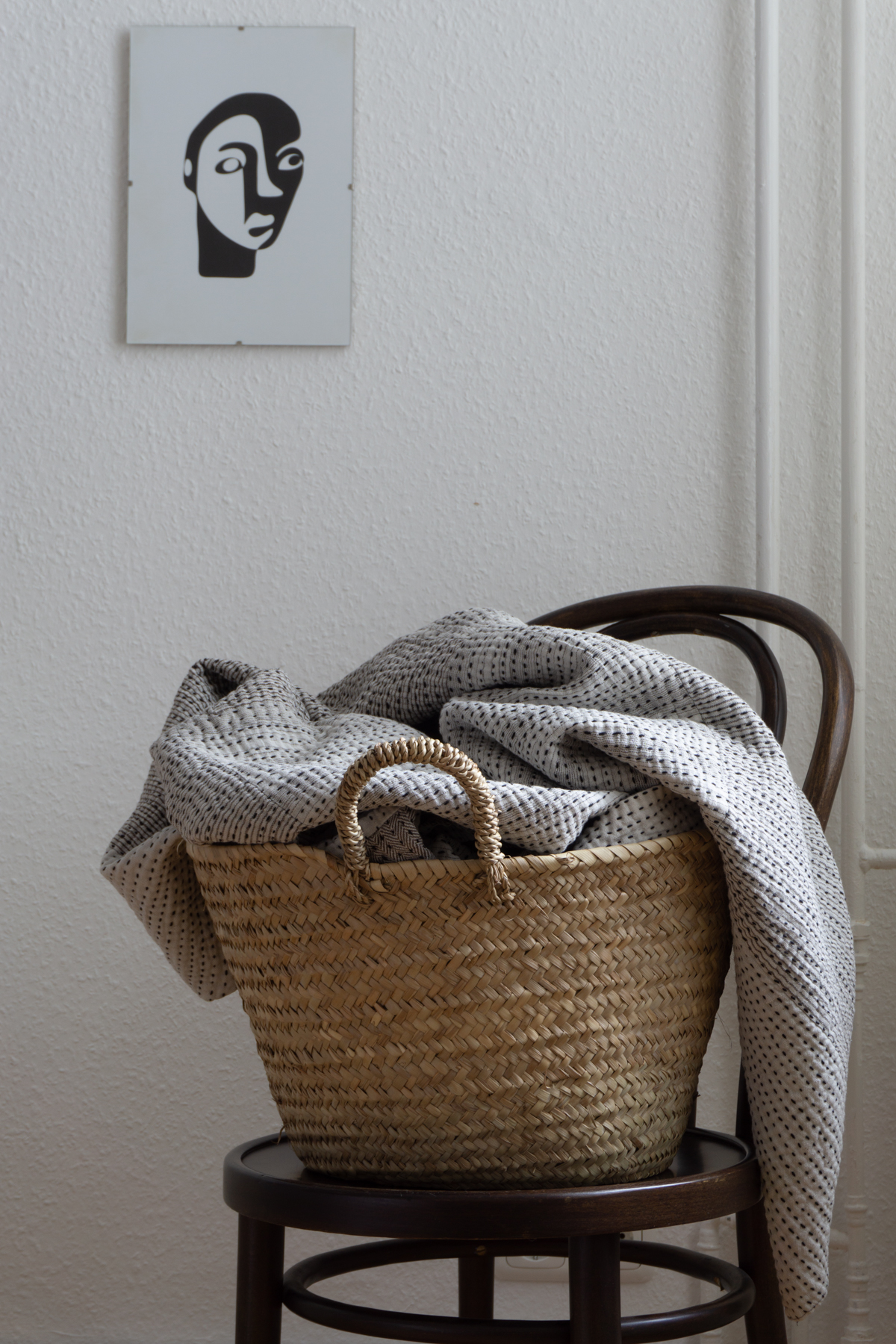
Q – When most people think of India and Nepal, a cultural aesthetic bursting with rich colors typically comes to mind. Yet beautifully muted hues and earthy tones appear to be the core of your brand’s style. Tell more me about Stitch by Stich’s philosophy towards color and adding pigment to the natural fibers your products come from.
“Our neutral color palette mainly stems from our love of natural dyes and we try to use unbleached fibers when we want to use white. All the kala cotton used in our quilts is dyed using natural dyes. Our wools are either un-dyed, or we use a bit of indigo because we love it! We have tried to make a coherent collection where you can mix and match everything, but we are introducing a little bit of color too! We will soon introduce some dark red wool which is a traditional natural dye called Lac made from beetles. Our wool weaver is also an expert dyer, and he wants to reintroduce this old method of dyeing.”
Q – Where do you see the brand growing in the years to come?
“Working with hand made production is a slow process and growth is organic and gradual. Our quilts are really popular, and we aim to gradually increase the number of quilt makers we work with whilst still maintaining the top quality stitching, so that we can step up the production and introduce more designs. We have recently created two wool and alpaca blankets with a creative and experimental micro-mill in England, which is a real departure for us – this will be our first power loom product, made close to home. We will be able to weave the blankets in much larger quantities than we can with handwoven pieces, so we hope to be able to wholesale these or supply them for hotel contracts. The wonderful thing about being a small company is that we can be flexible, and experiment and try new things all the time, so we will probably just follow our instinct and see where it leads us!”
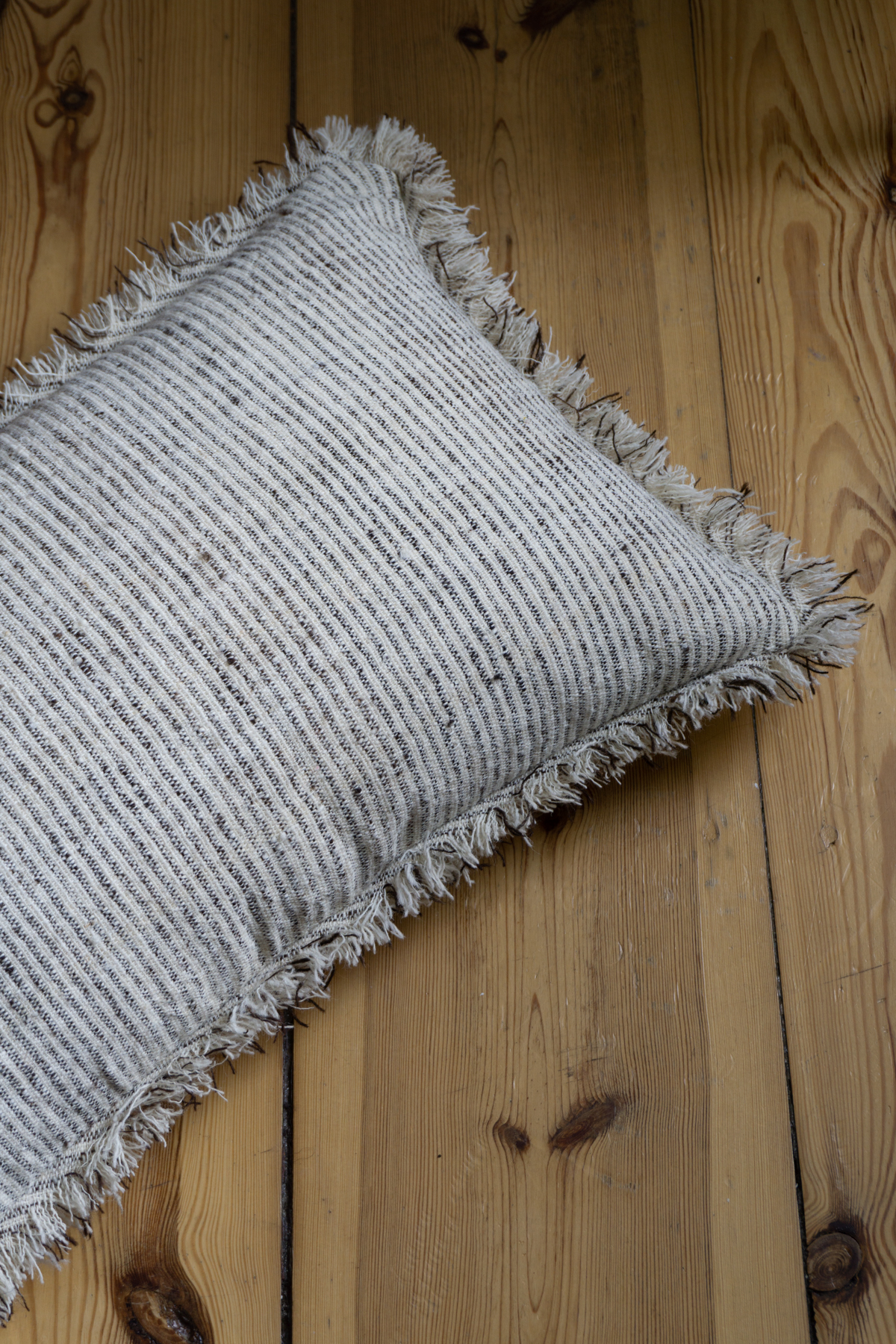
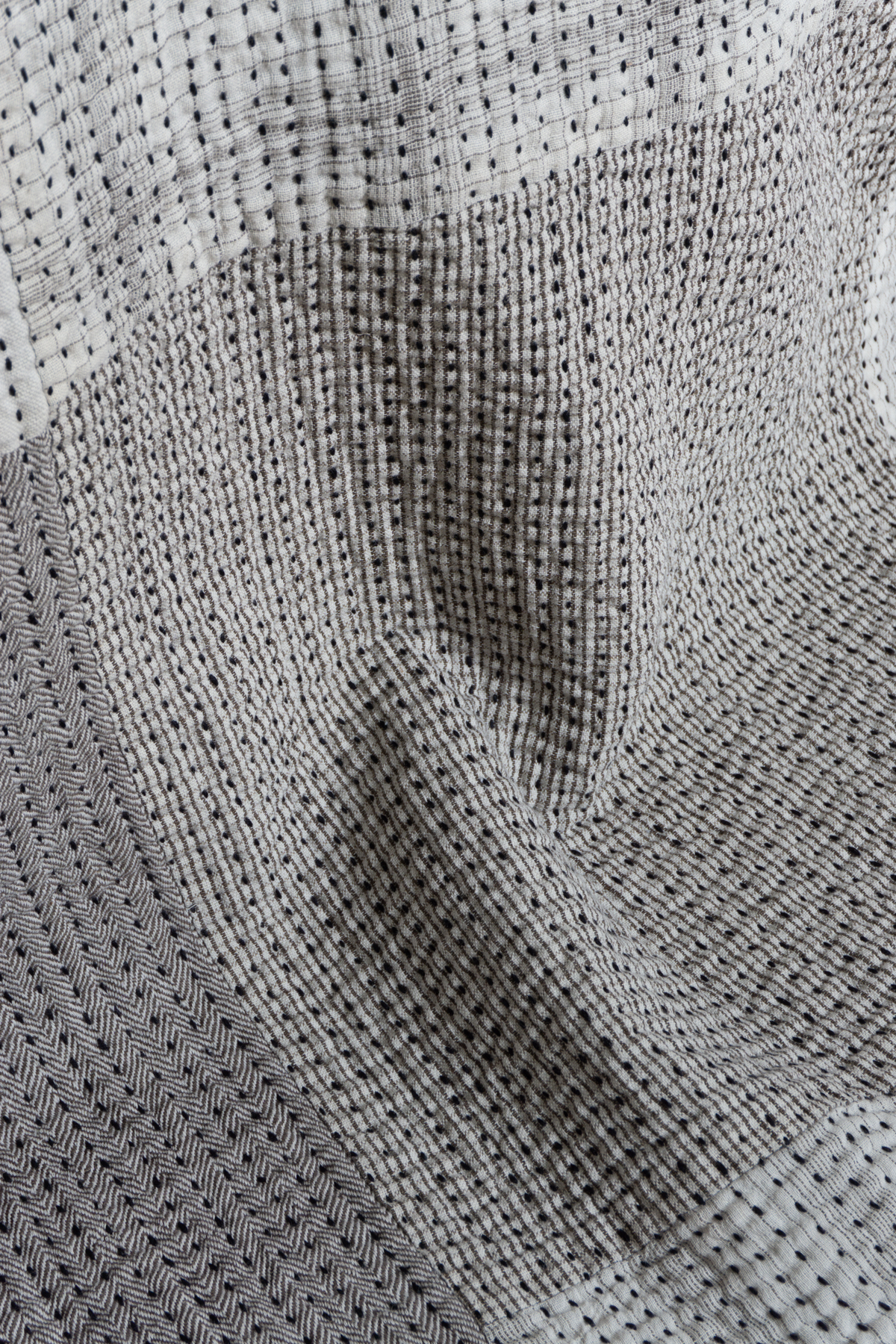
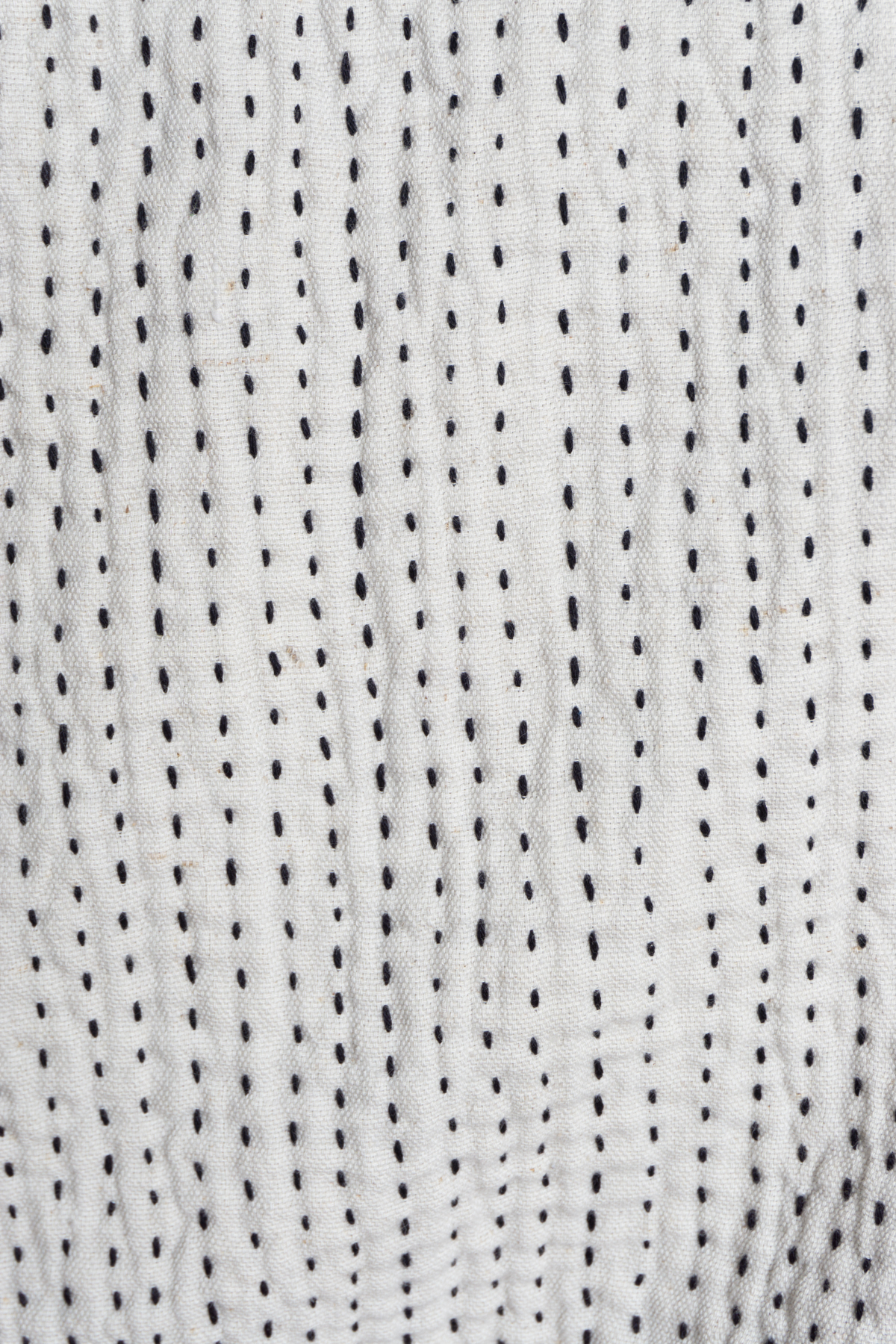
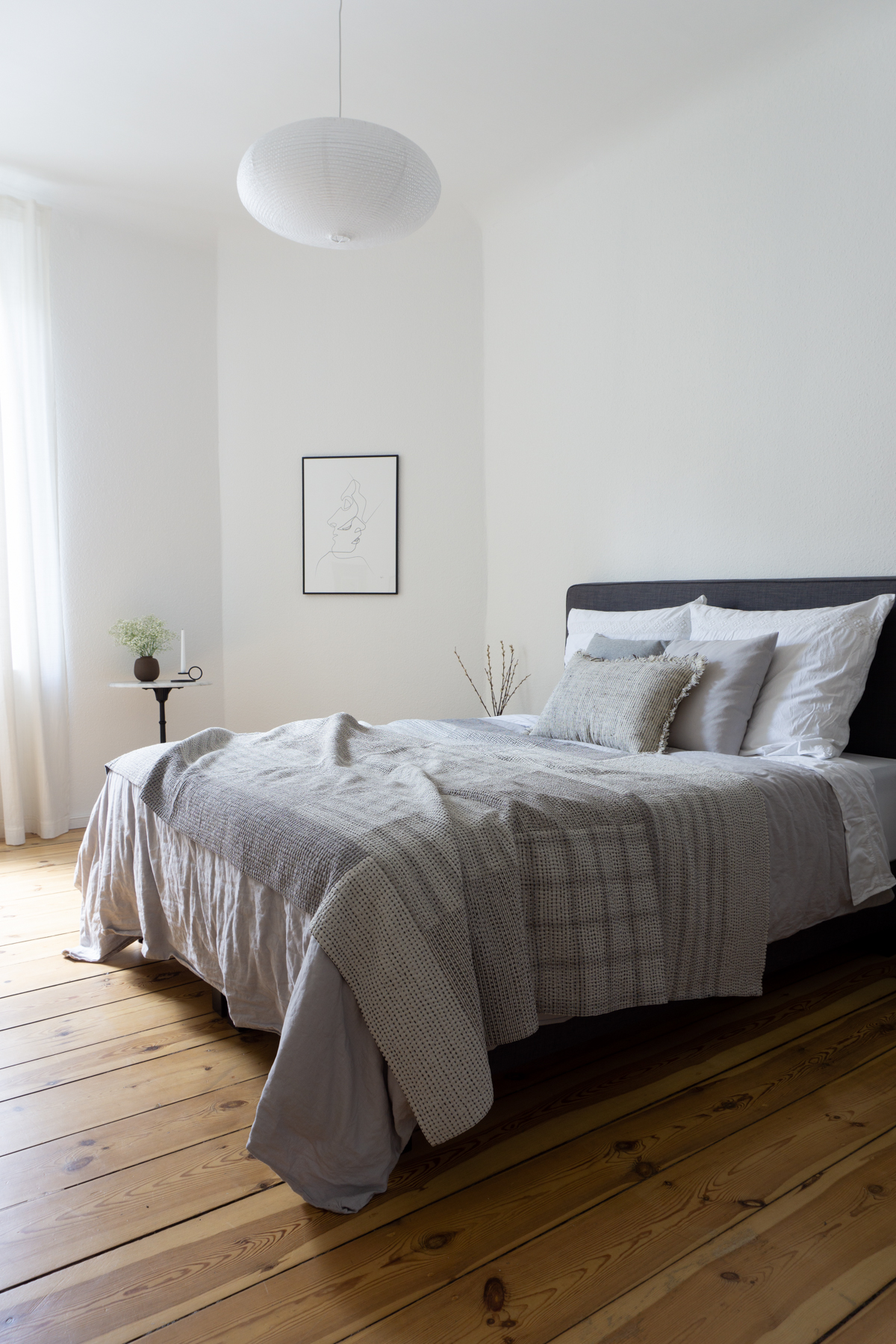
Featured Items – Desi Natural Stripe Handwoven Wool Cushion / Raw Chindi Organic Kala Cotton Kantha Quilt
This post features gifted items and was written in collaboration with Stitch by Stitch.


